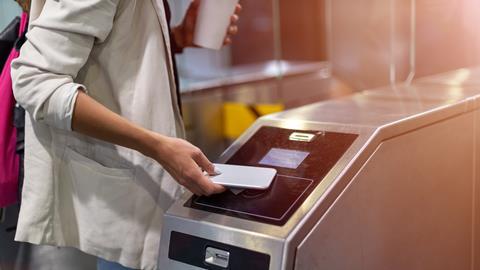Transport ticketing in the post-pandemic world must be more agile, more pragmatic and more flexible so that transport operators can attract new passengers to replace commuters lost to hybrid working, says Yann Chermat, COO of the Calypso Networks Association smart card organisation.

This year marks four years since the Covid-19 pandemic hit public transport hard. Its legacy can be felt in a hybrid working and changed commuting patterns: commuter volumes simply have not returned to pre-pandemic levels. And while some networks have responded well, for example the London Underground which has reached 90% of its previous ridership, others are still struggling; Boston’s MBTA is only at 57% of its pre-Covid ridership, despite reinstating 86% of its services.
London has recovered thanks to a distributed ridership base. By considering the needs of tourists, occasional users and even those making a single trip, it has been able to offset the reduction in commuters with other demographics.
New and inclusive ticketing options
Creating a balanced network that appeals to all demographics and provides a service that is more efficient, dependable, comfortable and trusted than private vehicle usage is easier said than done, but it is not impossible.
Traditional weekly or monthly season tickets may have previously met the needs of the daily commuter, but patterns are changing and networks need to meet the requirements of multiple different demographics.
Any successful ticketing system now must offer more: it must be more agile, more pragmatic and more flexible. Passengers always look for value and reliability, so tariff structures must meet this demand.
While many commuters will still want fixed term travel cards, additional options including enhanced pay-as-you-go and accessible concessionary fares will allow networks to diversify their offer in 2024, providing tickets that are more appropriate to the usage requirements of more people.
Combining these offers with innovations designed for Mobility-as-a-Service can create unified multimodal offers that give the same door-to-door convenience of private vehicles, at an affordable cost and without the issues of traffic jams and parking.
Digitally inclusive; not exclusively digital

Mobile ticketing is one way for networks to take a more digital approach. mTicketing helps mitigate the challenge of issuing physical tickets by allowing passengers to purchase, store and use tickets from smart devices they already own. It also helps advance sustainability goals by reducing the volume of paper or plastic used for the tickets themselves.
Digital approaches can be seamlessly incorporated into unified mobility offerings, allowing users to switch between modes of transport using just their smartphone.
But, a word of caution: it is crucial that this move towards mobile tickets does not entirely eliminate physical alternatives. Users that are less technologically willing, literate or able must not be restricted from accessing services; operators and authorities must make sure that a range of fare media is always readily available.
Resilient chip supply chains

The shutdown of key supply chain infrastructure during the pandemic caused a global shortage of chips, and while supply has returned to sufficient levels, we must learn from it.
Proximity cards like a Calypso smartcard or an EMV Chip card are based on the ISO/IEC 14443 standard. Within this standard, cards can be either Type A, initially designed to be lower cost memory only cards, or Type B cards which first came to market with higher end microprocessors and security.
While the differences between the two types of card have now vanished, with both able to support microprocessors and memory, the banking industry primarily favours Type A. This means the overwhelming number of cards and supporting components produced are Type A. Therefore, to leverage economies of scale in the manufacturing process, ticketing operators can look to transition to Type A.
In most cases, adapting to accept both card types can be achieved through a software update to existing card readers. This is where terminal certification is so important, confirming acceptance of both card types so transport operators and authorities can operate with confidence.
By making this migration, networks can build resilience into their supply chains, helping them avoid vendor lock-in and remain agile to market pressures.
Physical and economic mobility
In 2024, networks around the world have the opportunity to facilitate previously unprecedented levels of access for all, and it begins with an open ticketing framework.
Creating an inclusive and interoperable offer will help elevate an entire network. It forms the foundation of a modern mass transit system that offers a reliable, dependable and affordable alternative to private vehicle use.
In the often quoted words of former Mayor of Bogota Enrique Peñalosa, ‘an advanced city is not one where the poor own a car, but one where the rich use public transport’.




